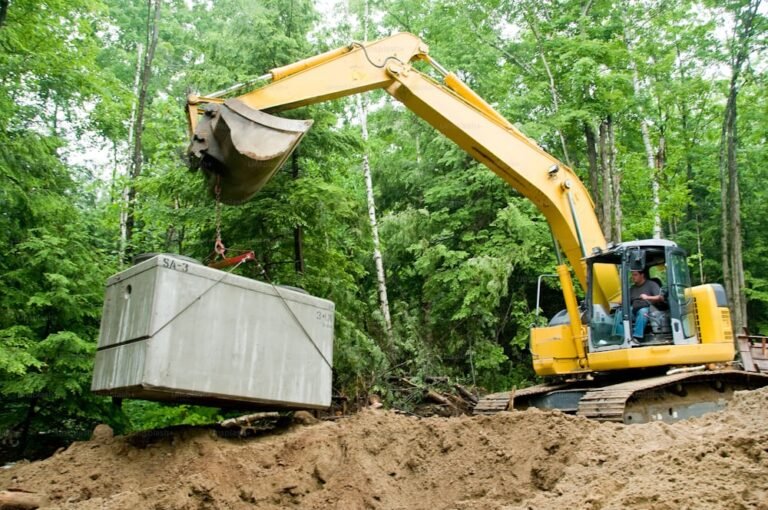Key Takeaways:
- Discover how sustainable waste management practices can benefit construction sites.
- Learn about practical methods to reduce, reuse, and recycle construction waste.
- Understand the importance of compliance with environmental regulations.
Why Sustainable Waste Management is Crucial
Sustainable waste management is not just a buzzword; it’s a necessity in the modern construction industry. With the increasing focus on environmental conservation, companies are looking for ways to reduce their carbon footprints. According to research, the construction industry produces a significant portion of total waste globally, accounting for about one-third of landfill waste. Adopting eco-friendly waste management practices can significantly minimize this impact, promoting both environmental and operational efficiency. By utilizing such services, construction companies can efficiently segregate and manage different types of waste, ensuring that recyclable materials are properly processed and reducing the volume of waste sent to landfills. This not only helps maintain a cleaner environment but also aligns with the global emphasis on sustainability.
Effective Strategies for Reducing Construction Waste
Material Planning
Proper planning is essential for reducing construction waste. By designing with sustainability in mind, project managers can minimize the amount of waste generated. One practical way to manage construction waste is through a commercial dumpster service. Using materials that are either recyclable or have a longer lifespan can significantly reduce waste. For example, selecting materials like steel, which is highly recyclable, or choosing longer-lasting alternatives can make a big difference. Efficient purchasing, where only the necessary amount of materials is bought, also helps minimize excess waste. Advanced project management software can aid in forecasting material needs more accurately, thus reducing over-purchasing.
Efficient Purchasing
Ordering just the correct quantity of materials can prevent surplus waste. Accurate measurements and forecasts are critical. Employing technological tools that offer precise calculations can significantly assist in this regard. Additionally, negotiating with suppliers for material take-back services where they reclaim unused goods can be an excellent way to manage excess materials responsibly. This not only helps reduce waste but also builds long-term relationships with suppliers who are keen on sustainable practices.
Reusing Materials to Cut Down Waste
Reusing materials is another effective strategy for managing construction waste. Items like bricks, tiles, and wood can often be used in new projects, reducing waste and costs. For instance, wood from old structures can be repurposed for new building frameworks or flooring options. Additionally, old concrete can be crushed and used as a base for roads or new construction, reducing the need for fresh materials.
Furthermore, encouraging subcontractors to adopt reusing practices can amplify the impact. Companies can set up a system where leftover materials are stored and cataloged for future use. This not only promotes a sustainable practice but also creates a cost-effective resource pool for upcoming projects. By keeping an inventory of reusable materials, project managers can quickly identify what can be reclaimed, further promoting an eco-friendly approach.
The Recycling Process for Construction Waste
Recycling is the most well-known method of managing waste. It involves converting waste materials into new products. Construction sites can benefit from setting up dedicated recycling bins and ensuring that workers are educated on what can and cannot be recycled. The EPA provides detailed guidelines on sustainable materials management, which can be a valuable resource in establishing effective recycling practices on construction sites.
Identifying local recycling facilities that specialize in construction materials is crucial. By establishing partnerships with these facilities, construction companies can ensure that various materials, such as metal, concrete, and drywall, are correctly recycled. This not only reduces the burden on landfills but also ensures that valuable materials are reintroduced into the supply chain, promoting a circular economy in the construction industry.
Compliance with Environmental Regulations
Construction companies need to comply with local and federal environmental regulations. Failing to comply can result in large penalties and a damaged image. Familiarize yourself with rules from bodies like OSHA to ensure your practices are up-to-date and environmentally responsible. Being proactive about compliance not only avoids legal complications but also contributes to a safer and healthier work environment.
Regular audits and inspections can help in maintaining compliance. These not only ensure that the site adheres to legal standards but also identify areas for improvement in waste management practices. Additionally, training programs for employees can keep everyone informed about the latest regulations and sustainable practices. Promoting a culture of adherence and sustainability can greatly improve the overall efficiency of waste management efforts.
Innovative Technologies in Waste Management
Advancements in technology are offering new solutions for waste management on construction sites. From smart waste bins to automated sorting systems, these innovations are helping to streamline waste management processes. Construction firms are increasingly adopting these technologies to boost efficiency and sustainability.
For example, AI-powered waste segregation systems can automatically sort different types of waste, reducing manual labor and increasing sorting accuracy. Drones can monitor waste levels in real-time, enabling timely collection and disposal. Technologies like these optimize waste management and provide valuable data that can be used to refine further and improve waste management practices over time.
Community and Stakeholder Engagement
Engaging with the community and stakeholders is crucial for the successful implementation of sustainable waste management practices. By fostering transparency and collaboration, companies can gain valuable insights and support. Community engagement can also highlight the company’s commitment to sustainability, enhancing its public image.
Organizing community workshops and feedback sessions can provide a platform for exchanging ideas and identifying potential areas for collaboration. Involving stakeholders in the planning and implementation phases ensures that their concerns and expectations are addressed, leading to more effective and accepted waste management strategies. Moreover, such engagement can help build stronger community relations and encourage broader participation in sustainability efforts.
Conclusion: The Path to Sustainable Construction
Sustainable construction waste management practices offer numerous benefits, from cost savings to environmental protection. By reducing, reusing, and recycling materials and adopting new technologies, the construction industry in Toronto can significantly lower its environmental impact. Compliance with regulations and community engagement further cement these practices as essential in the modern construction landscape.
In conclusion, the journey toward sustainable construction waste management is a multifaceted approach that combines innovative practices, regulatory compliance, and community involvement. By integrating these elements, the construction industry can not only minimize its environmental footprint but also pave the way for a more sustainable and responsible future.





